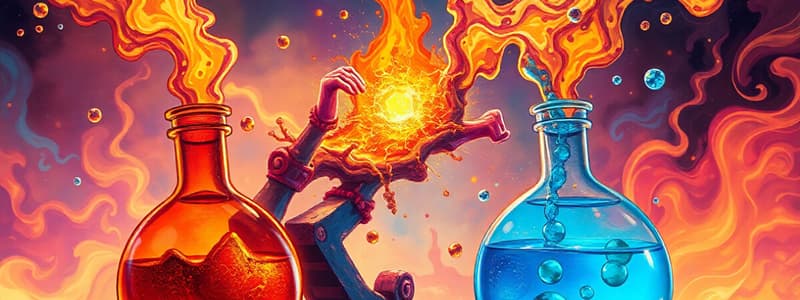Podcast
Questions and Answers
What is the primary function of the ear?
What is the primary function of the ear?
- To assist in balance and spatial orientation (correct)
- To cool the body
- To produce sound
- To filter air
Which part of the ear is responsible for amplifying sound vibrations?
Which part of the ear is responsible for amplifying sound vibrations?
- Cochlea
- Auditory nerve
- Eardrum
- Ossicles (correct)
Which structure in the inner ear is responsible for converting sound waves into electrical signals?
Which structure in the inner ear is responsible for converting sound waves into electrical signals?
- Basilar membrane
- Organ of Corti (correct)
- Ear canal
- Semicircular canals
How do sound waves travel through the air?
How do sound waves travel through the air?
What is the main role of the tympanic membrane (eardrum)?
What is the main role of the tympanic membrane (eardrum)?
Flashcards
String
String
A sequence of characters used to represent text, like words and sentences in a computer program. It's like a chain of letters, numbers, and symbols.
Program
Program
A set of instructions that a computer follows to perform a task. Imagine it like a recipe that tells the computer what to do step-by-step.
Application
Application
A program that lets you interact with a computer, like a window that lets you input data or view information.
Operating system
Operating system
Signup and view all the flashcards
Programming language
Programming language
Signup and view all the flashcards
Study Notes
Types of Chemical Reactions
- Chemical reactions involve the rearrangement of atoms to form new substances.
- Reactants are the substances present at the start of a reaction, and products are the substances formed at the end.
- Reactions can be represented using chemical equations. For example: A + B → C + D. Where A and B are the reactants, and C and D are the products.
Different Types of Reactions
- Combination/Synthesis: Two or more reactants combine to form a single product, like: A + B → AB.
- Decomposition: A single reactant breaks down into two or more products, like: AB → A + B.
- Displacement/Single Replacement: One element displaces another in a compound, like: A + BC → AC + B.
- Double Displacement/Metathesis: Two compounds exchange ions to form two new compounds, like: AB + CD → AD + CB.
- Acid-Base Reactions: Involve the reaction of an acid and a base to produce a salt and water. This is a specific type of double displacement reaction, illustrated by: acid + base → salt + water.
- Combustion: A substance reacts rapidly with oxygen, often producing heat and light. A classic example is a hydrocarbon (like methane) burning in oxygen: hydrocarbon + oxygen → carbon dioxide + water.
Describing Reactions
- Balanced chemical equations show that the number of atoms of each element is the same on both sides of the equation.
- This illustrates the law of conservation of mass, which states that mass cannot be created or destroyed in a chemical reaction.
- The state symbols (s, l, g, aq) indicate the physical state of substances (solid, liquid, gas, or dissolved in water.)
Example of Reaction Types
- Magnesium reacting with oxygen illustrates a combination reaction.
- The thermal decomposition of calcium carbonate is an example of decomposition.
- Iron reacting with copper(II) sulphate solution is a displacement reaction.
- Neutralization reactions exemplify acid-base reactions.
- Burning propane exemplifies a combustion reaction.
Important Concepts
- Reactants and products: Identifying these in a chemical equation.
- Balancing equations: Ensuring the same number of each atom on both sides of the equation.
- State symbols: Using correct symbols for states of matter (s, l, g, aq).
Factors Affecting Reaction Rates
- Temperature: Higher temperatures generally increase reaction rates, as molecules move faster and collide more frequently.
- Concentration: Higher concentrations of reactants usually lead to faster reactions, as there are more reactant particles in a given space.
Additional Notes
- Identifying different reactions is important for predicting what substances will be produced.
- Factors affecting reaction rates help us understand how to control and optimize chemical processes.
- Chemical equations provide a concise way to represent chemical reactions.
Studying That Suits You
Use AI to generate personalized quizzes and flashcards to suit your learning preferences.




